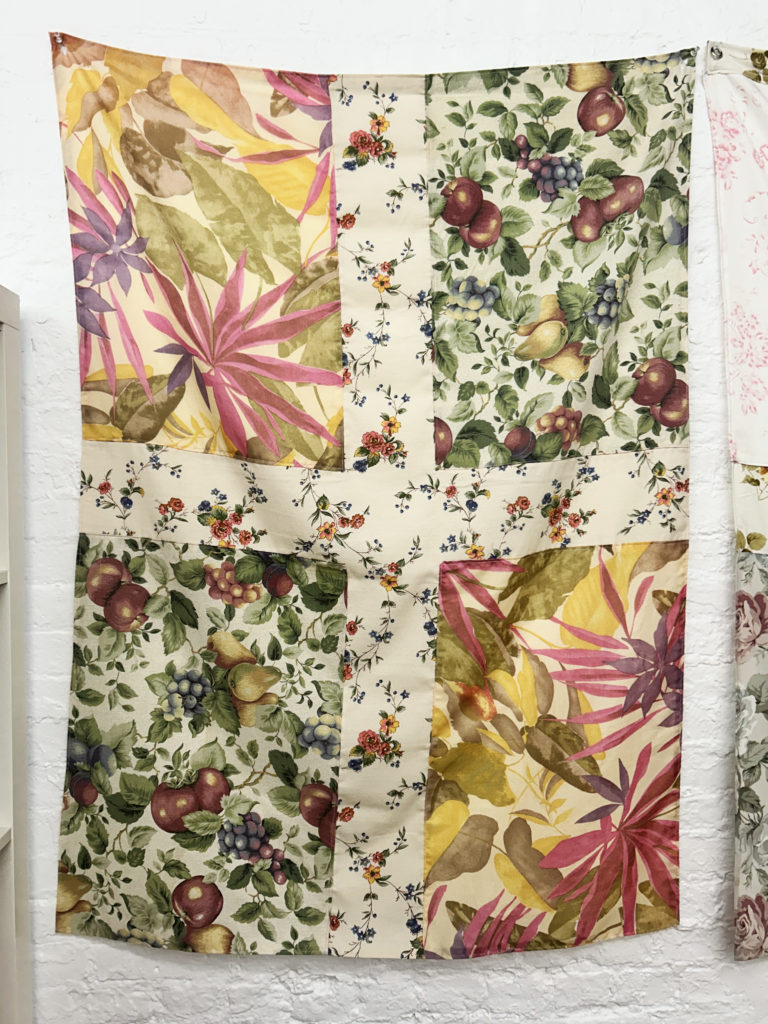WIP Artist Highlight: Gerardo Dexter Ciprian
Julie Schumacher, Artist Programs intern at TAC, got together with WIP resident Gerardo Dexter Ciprian:
Julie: Thanks for sitting down today. Can you introduce me to your work and share with me what your relationship or draw is to the Textile Art Center?
Gerardo: I work across different media, and the media has expanded over time. I started out in photography for a little bit. Let me backtrack a little bit even more. I studied architecture—that's my formal education background.I graduated from school, and was kind of on that track as an architect. I think in my heart and in the back of my mind, I've always wanted to be an artist. As a kid, I art, but being a son of immigrants, there was this instillation of what's more practical to do. So, architecture felt to me like a negotiation. Like, still creative, but, at least on paper, it seemed like [a] more secure job. So, I went to school for architecture and graduated and came back to NYC. I became friends with a few artists—my brother and his group of friends. I was in this milieu of artists, and that really inspired me. So I quit architecture and started bartending to support my art practice. I started with photography because it felt very immediate. You know, I could just buy a camera, and I could start making work. Something about that drew me in.
I then got a studio space, my first studio space in 2009 or 2010. And now that I had space to work with I sort of intuitively, I started working with space and making sculptures.
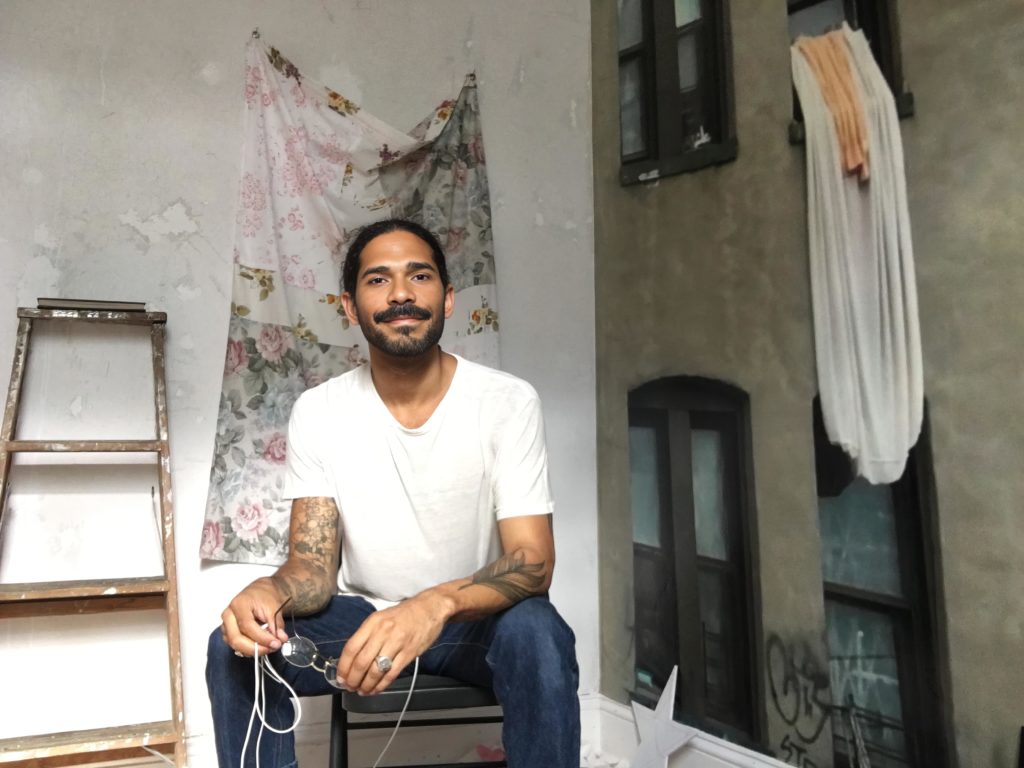
So, you were working with sculptures in different forms? Were you working with textiles at all?
Gerardo: Not at that time. I actually remember very distinctly when I started working with fabric. I tell this story all the time because it felt very pivotal to my practice. I was going through a period of, like, the artist’s version of writer's block. I was stuck. I was very frustrated.
I would spend days in the studio, not knowing what to do.I remember literally laying on the ground of my studio at one point going through it.
I then would look out the window of my studio in Ridgewood at the time, and there was this kind of courtyard space where buildings come together—like, not facing the street, but it's kind of the back face of the buildings. My window looked into this courtyard space, and I would see someone draping their laundry from the windowsill onto this clothing line. And I would take a—quote, unquote—break from my practice and take photos and videos almost every day of this. In my mind, I was taking a break from art. I was taking a break because I didn't know what to do. So I would just take these videos—there was something interesting to me about it—so I would take these videos, and the sheets would just flow in the wind, the fabric moving. And then, one day, I found myself instinctively draping fabric over my sculptures…I was working on some forms, and I had fabric lying around. And I kept doing this. And then I just noticed that there was something happening here.
And then I dug a little bit deeper. What's so appealing to me about this image? And I think, to me, it looked like somebody's grandma. All I could see were her brown arms—so, I imagined her as an immigrant. And there was something about this image of hanging your laundry to dry. It felt so analog and brought to me a third-worldness, where I grew up as a child in the Dominican Republic.
And I just had this rush of memories of my grandmother laying her laundry out. And so from then on, I was intentionally now looking at my own migration story, [and] it just opened my practice completely. Before this, I was making a lot of abstract pieces, not really delving into narrative or even my own story. And this was a huge pivot. From this point onward, I was like: alright—let's go.
My practice from here on out started delving into migration stories, into my family's story. It was more personal.
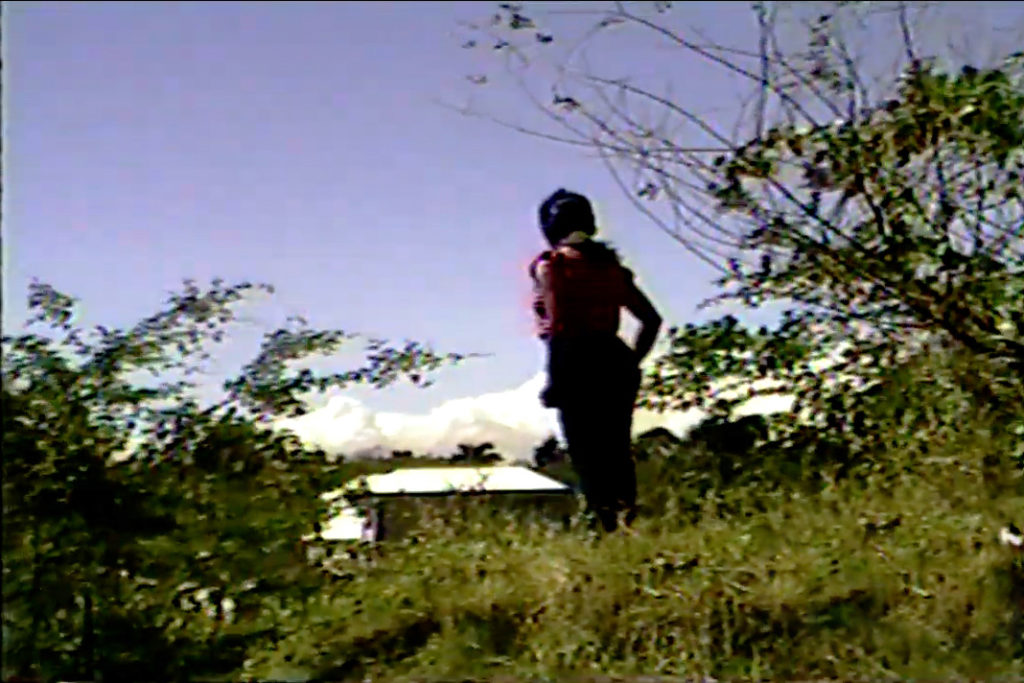
You have described your work as alchemy. Is the process of making art where you experience that alchemy? And Is this alchemy in how you want others to experience your work?
Gerardo: When I talk about healing and making sense of the world—I think for a while, I shied away from that, and I felt selfish and, you know, solipsistic. But, actually, I think all art, in a very fundamental way is primarily for you, right? But I do think that through that process, you uncover some things that are not just about you.
What I'm trying to figure out about my migrant experience is if there's some universal truth about that. And I see it all the time. Like, people come up to my work,people who don't share my same migrant experience—are from completely different parts of the globe—who recognize themselves in the work. So Yeah. And I still struggle with that—I mean, maybe every artist does—thinking like I'm delving too much in my own [self]. But I do think, actually, that's where the meat of work comes from. Right? That's where the juice is, you know? And you kinda have to trust that and that eventually something universal comes from it.
So, to your question, I think primarily I am trusting some intuitive voice that says this and also that is doing something for me transformative or healing, sparking something, some curiosity, some joy. These are all tell signs for me that I'm going in the right direction. But then I do intentionally think about audience, for sure.
This gets tricky when you're an immigrant, and you go through a process of trying to assimilate. And so I think there was a while where I was speaking to an audience, not consciously, but I think I was trying to translate my experience to an audience that might not know it—having gone to primarily white institutions and going to school—without realizing it, I think I was trying to make pieces that were legible to a white gaze. The more that became evident to me, I eventually decided I did not want to do that anymore..
So no I feel like I intentionally think of…well, first of all, a lot of my work is intergenerational. So, I think of my family. I think about speaking to my grandmother in these fabric works.
I incorporate my family into a lot of this work [which] also gets activated in performance. So, for the last show my mom, my sister and my brother sang with me, so I feel like that's the first concentric circle. Then, I think of Dominican immigrants. Then, I think of immigrants more broadly. You know? So it goes from there. And there is a kind of reclaiming of opacity, actually. Like, not everything has to be legible to everyone who sees it. Not as a way to shut anyone out—you know, I welcome you in and ask me questions. But I'm not overtly preoccupied with this being legible to everyone, if that makes sense.
The works in your studio right now at the Textile Art Center have iconography like flags but are made with beautiful floral fibers. Can you tell me about these tapestries?
Gerardo: Yeah, they are definitely flags, for sure.
I started them around the time where I was seeing my neighbor hanging the laundry out to dry. I was collecting bedsheets at that time. Some of them are hand-me-down bedsheets from family, But then it expanded, and I was collecting bedsheets from thrift stores. And I think in thinking about my migrant experience, there was a lot of contemplation around, like, what does it mean to be an immigrant and represent where you're from?
I was reminded [of flags], and flags are so interesting—like, depending on context, they have such different meanings. They can be, on one level, seen as these patriotic and nationalistic signs. Right? But, they have also been used for protests where sometimes they change the color slightly to mean different things.
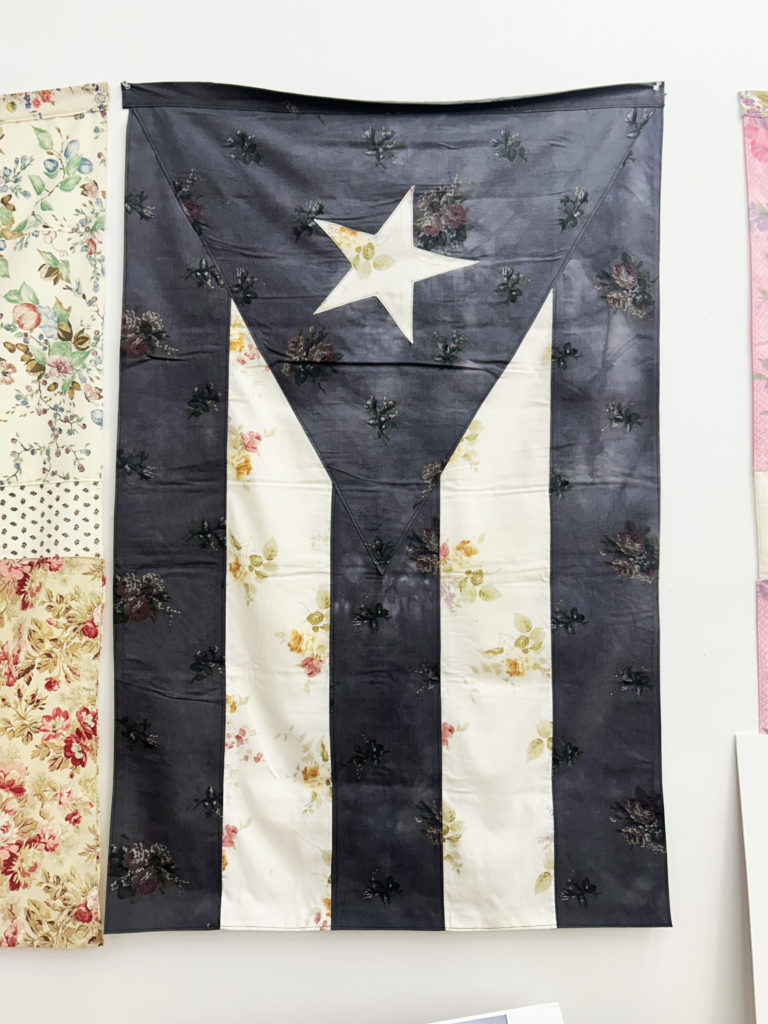
So I have here a flag from Puerto Rico, which was made during Hurricane Maria. It's a flag where the reds and blues are black, and the white stripes remain white—it's a recurring protest flag that comes out in times of protest. And so I made this in solidarity with Puerto Rico. So there's that notion of context. I also was reminded when I came here as a 10-year-old to New York, I remembered we had the JanSport backpacks. It was like a trend at the time that you would white-out the Jansport logo, and folks would draw in their flag. When I went to school, it was lots of immigrants—so Dominican flags, Puerto Rican flags, Mexican flags. And I was a 10-year-old—it wasn't like a nationalistic [thing]. It was more like, you know, I'm in this strange land. Like, who are my people? It was a way of building community. So, [they have] very different meanings depending on their context.
So, when I was contemplating this kind of symbol-making for immigrants, I wanted to bring it to a place that was more intimate. So, bedsheets are these very intimate fabrics— And something about these floral prints also reminds me of my grandma’s batas—nightgowns—that she would wear all the time—they had these soft pastel floral prints. So it was an homage to her—softening the edges of this powerful symbol with the flow of floral prints, and faded colors. So that's mostly what it's about. And then I delved into the history of flags.
Right now, we're living through a moment of such [anti-]immigration views. In my own country, Dominican Republic,anti-immigration and anti-Haitian sentiment are reeling through the country, which is heartbreaking to me. So what I'm also trying to foreground in these flags is the deep solidarity across people in liberation movements.The Dominican flag actually borrows its iconography from the Haitian flag—the blue band and the red band. And a lot of flags in Latin America, like the Colombian flag, also borrow from the Haitian flag because they were the first country to revolt and abolish slavery, and were supporting liberation movements across [Latin America].
And this flag, the Grito de Lares in Puerto Rico, was a rebellion flag against Spanish rule and looks very similar to the Dominican flag. So again, all these flags are speaking to each other. So, I'm trying to foreground this history and soften these hard edges around different peoples.
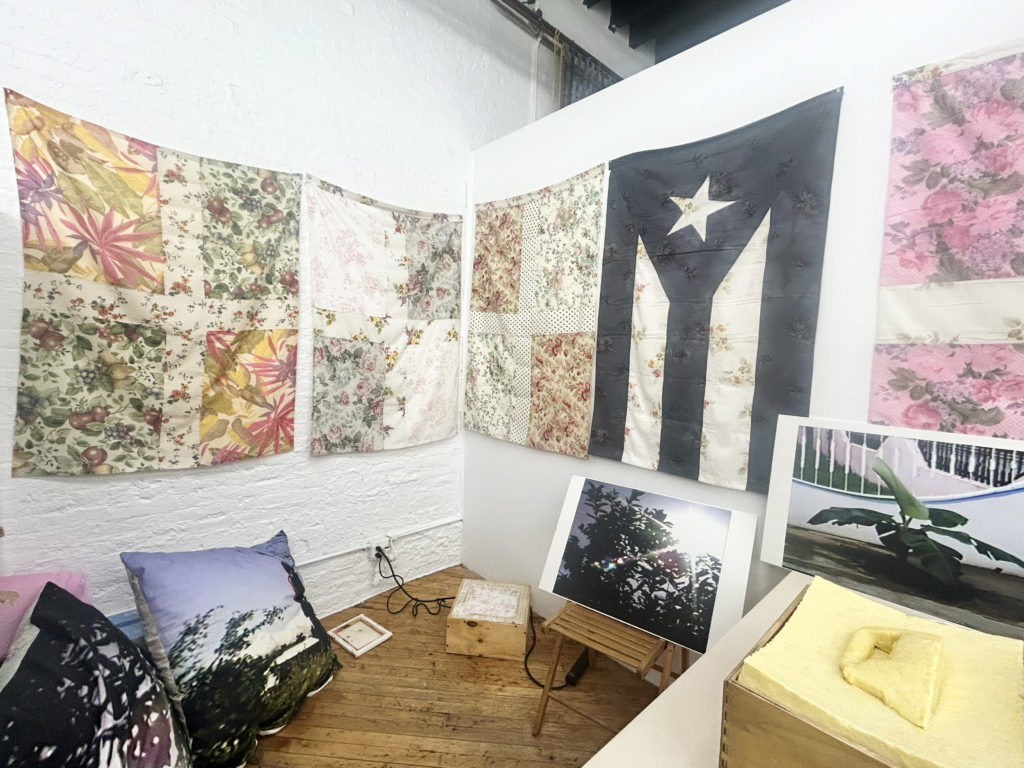
So, one last question. Can you tell me a little bit about your process? How is that important to the wider import of your work, if it is.
One-hundred percent. I mean, my textile practice, in particular, is slow. It's very slow, and that feels important. The first flag I made of these was hand-stitched. So there's a lot of intentionality in slowing down to contemplate, to meditate. That seems important.
I also think in the process of making, I'm always hoping for something to happen, for something to transform.
And so I generally don't have a clear idea of what something's gonna look like. So there’s always gonna be this tension between what I may start to feel like I want the thing to look like, and what the making of the thing is requesting of me. Then it's like, okay, I start to get excited about making a thing and then, I kinda remind myself to slow down, or the process itself pulls me back, and it becomes again a more intuitive practice. But then, at some point, you know, we have to have a show, and everything has to come together. Even then, I try the coming together of it to also become a performance or a ritual. A container for something to happen in.
I’ve always loved how in theater and dance there’s this implicit social contract where we gather everyone’s attention and we ritualize our encounter, which doesn’t always happen in visual art shows. So, lately I’ve been adding elements of performance and rituals in the hopes that something happens. Hopefully, you leave different than how you came. All these things that sound cliché, but I really believe that can happen.
